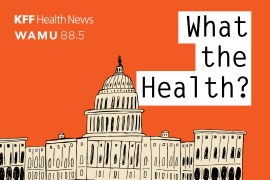Lawmakers Unveil New Bipartisan Bill To Boost Medicare Doctors’ Pay
At the end of last year, CMS proposed a cut to Medicare physician reimbursements by 2.9% for 2025, but the new bill would boost physician pay by 6.6% retroactive to the beginning of the year. Other news covers Colorado School of Medicine unionization; public health workforce shortages; and more.
Modern Healthcare:
Medicare Doctor Pay Increase Introduced In New Bill
Doctors and some bipartisan allies on Capitol Hill advanced their campaign to boost Medicare physician reimbursements with the release of new legislation Friday. The Medicare Patient Access and Practice Stabilization Act of 2025 would give doctors a 6.6% rate increase through 2026 and be retroactive to the beginning of this year, when a 2.9% cut took effect. (McAuliff, 1/31)
More about health care workers —
The Colorado Sun:
Medical Residents At The University Of Colorado Push For A Union
At the University of Colorado School of Medicine, first-year residents — doctors just starting their careers — make about $75,000 per year. That is solidly within the middle class in Colorado, albeit on the lower end. But residency is also a notorious meat-grinder phase of medical or surgical training. Residents work long hours, sometimes with overnight shifts or 24-hour shifts. All told, it can come out to as much as 80 hours per week. And residents say they may feel pressure to work longer, unreported hours. (Ingold, 2/3)
CIDRAP:
GAO: Public-Health Workforce Shortage Undermines Ability To Respond To Outbreaks, Other Emergencies
A new US Government Accountability Office (GAO) report identifies a shortage of public health workers across multiple occupations and locations that restricts the ability to perform essential functions such as disease investigation and mitigation, hazard detection, and emergency response. The US Department of Health and Human Services (HHS) and other organizations have taken actions (eg, job training and placement, better pay) to alleviate the shortages, which began with the 2008-2009 recession and worsened during public health emergencies such as the COVID-19 pandemic, the authors said. (Van Beusekom, 1/31)
CBS News:
Minnesota National Guard Trains With Allina Health In New Simulation Center
The Minnesota National Guard spent Friday training side by side with medical professionals at Allina Health in a new simulation center. It was a hands-on learning opportunity for a field medic platoon from the guard's 34th Infantry Division, which has a federal defense mission as well as a responsibility to respond to local emergencies. (Chapman, 1/31)
Other health industry updates —
Carolina Public Press:
Instrumental In Helene Aftermath, Mission Health ‘Back To Their Old Ways’
Asheville’s Mission Health has been trying to help the city recover in the aftermath of Tropical Storm Helene. But medical staff and state officials have not softened their stance toward the beleaguered hospital. New North Carolina Attorney General Jeff Jackson, for one, is not backing down from his office’s lawsuit against the medical provider. (Sartwell, 2/1)
CBS News:
Prospect Medical Holdings Announces Deal To Sell Delaware County Hospitals To Not-For-Profit Consortium
On Friday, Prospect Medical Holdings, the parent company of Crozer Chester and Taylor hospitals, announced a deal to sell the hospitals to a not-for-profit consortium of what the company is calling "health care operators." This comes just three weeks after Prospect Medical Holdings filed for Chapter 11 bankruptcy. The sales motion made Friday wrote that Prospect Medical Holdings was preparing for the "potentially unavoidable decision to shut hospital doors and begin turning away patients." (Holden, 1/31)
Bloomberg:
Walgreens Suspends Dividend While Suitor Sycamore Seeks Deal Financing
Walgreens Boots Alliance Inc.’s chairman and biggest shareholder, Stefano Pessina, has dealmaking in his DNA. Yet finding a deal to rescue the drugstore empire he built is proving difficult. When the Italian-born Pessina, 83, merged his Alliance Boots with the US pharmacy giant in 2014, it marked a crowning moment in a decades-long campaign to construct a pharmacy colossus. (Davis, Swetlitz, and Basu, 1/31)






